
Green Day is an American rock band formed in Rodeo, California in 1987 by lead vocalist and guitarist Billie Joe Armstrong and bassist and backing vocalist Mike Dirnt, with drummer Tré Cool joining in 1990. In 1994, their major-label debut Dookie, released through Reprise Records, became a breakout success and eventually shipped over 10 million copies in the U.S. Alongside fellow California punk bands Bad Religion, the Offspring, Rancid, NOFX, Pennywise and Social Distortion, Green Day is credited with popularizing mainstream interest in punk rock in the U.S.
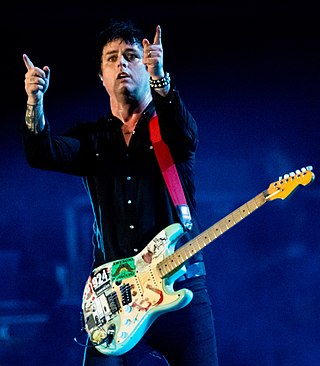
Billie Joe Armstrong is an American musician and actor who is best known for being the lead vocalist, guitarist, and primary songwriter of the rock band Green Day, which he co-founded with Mike Dirnt in 1987. He is also a guitarist and vocalist for the punk rock band Pinhead Gunpowder, and provides lead vocals for Green Day's side projects Foxboro Hot Tubs, the Network, the Longshot and the Coverups. Armstrong has been considered by critics as one of the greatest punk rock guitarists of all time.

Insomniac is the fourth studio album by the American rock band Green Day, released on October 10, 1995, by Reprise Records. It was recorded at Hyde Street in San Francisco, and the band prioritized high-energy takes during the recording sessions. Released as the follow-up to the band's multi-platinum breakthrough Dookie, Insomniac featured a heavier, hardcore punk sound, with bleaker lyrics than its predecessor. Lyrically, the album discusses themes such as alienation, anxiety, boredom, and drug use. Insomniac also served as a reaction to many early fans who had turned their backs on the band after it achieved mainstream success with Dookie.

Michael Ryan Pritchard, better known by his stage name Mike Dirnt, is an American rock musician who is the co-founder, bassist, backing vocalist, and occasional lead vocalist of Green Day. He has also played in several other bands, including the Frustrators. His stage name Dirnt was originally a nickname that his friends from grade school gave him, as he constantly played "air bass/guitar" and made a "dirnt, dirnt, dirnt" noise while pretending to pluck the strings.
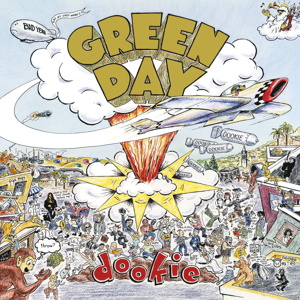
Dookie is the third studio album by the American rock band Green Day, released on February 1, 1994, by Reprise Records. The band's major label debut and first collaboration with producer Rob Cavallo, it was recorded in late summer 1993 at Fantasy Studios in Berkeley, California. Written mostly by frontman and guitarist Billie Joe Armstrong, the album is largely based on his personal experiences and includes themes such as boredom, anxiety, relationships, and sexuality. It was promoted with four singles: "Longview", "Basket Case", a re-recorded version of "Welcome to Paradise", and "When I Come Around".

International Superhits! is the first greatest hits compilation by American rock band Green Day, released November 13, 2001, through Reprise Records. It collects all of the band's singles released between 1994 and 2000 as well as a rerecording of "Maria", a B-side from Waiting, and a previously unreleased track, "Poprocks & Coke". A DVD and VHS titled International Supervideos! was released simultaneously, collecting fifteen of the band's music videos spanning the same period. Both releases have been certified Platinum in the United States for sales of over 1 million copies and 3× Platinum in the United Kingdom for sales of 900,000.
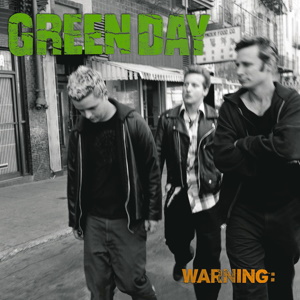
Warning is the sixth studio album by the American rock band Green Day, released on October 3, 2000, by Reprise Records. Building upon its predecessor Nimrod (1997), it eschewed the band's trademark punk rock sound and incorporated acoustic elements and pop and folk styles. Lyrically, the album contains more optimistic and inspirational themes in comparison to the band's earlier releases. Warning was also Green Day's first album since Kerplunk (1991) that was not produced by Rob Cavallo, although he did have a hand in its production and was credited as executive producer.

Shenanigans is the second compilation album by American rock band Green Day. It was released on July 2, 2002, by Reprise Records. The album contains B-sides, rarities, covers, and the previously unreleased track "Ha Ha You're Dead". "Espionage", a spy-themed instrumental, was featured on the soundtrack for Austin Powers: The Spy Who Shagged Me and "Tired of Waiting for You", their cover of the Kinks song of the same name, was featured on the soundtrack for the 1997 film Private Parts.

39/Smooth is the debut studio album by the American rock band Green Day, released on April 13, 1990, by Lookout Records. After finalizing their line-up, the band played frequent shows at the 924 Gilman Street venue, where they started attracting a following and eventually caught the attention of Lookout Records' founder Larry Livermore. Following the release of their debut EP 1,000 Hours (1989) and stints in other bands, Green Day went to Art of Ears Studio, located in San Francisco, California, to record their debut studio album, which was co-produced with Andy Ernst. Sessions started at late December 1989 and ended in January 1990, costing $675. 39/Smooth has been tagged as punk rock, pop-punk and skate punk, with comparisons made to the work of older punk bands the Buzzcocks and the Ramones, as well to contemporaries Crimpshrine and the Lookouts. Written mostly by frontman and guitarist Billie Joe Armstrong, unrequited love and longing for desire served as the main lyrical topics, while reminiscing on youth appeared in two of the songs.

American Idiot is the seventh studio album by the American rock band Green Day, released on September 21, 2004, by Reprise Records. As with their previous four albums, it was produced by Rob Cavallo in collaboration with the group. Recording sessions for American Idiot took place at Studio 880 in Oakland and Ocean Way Recording in Hollywood, both in California, between 2003 and 2004. A concept album, dubbed a "punk rock opera" by the band members, American Idiot follows the story of Jesus of Suburbia, a lower-middle-class American adolescent anti-hero. The album expresses the disillusionment and dissent of a generation that came of age in a period shaped by tumultuous events such as 9/11 and the Iraq War. In order to accomplish this, the band used unconventional techniques for themselves, including transitions between connected songs and some long, chaptered, creative compositions presenting the album themes.

"Basket Case" is a song by rock band Green Day, released on August 1, 1994 by Reprise Records as the second single from the band's third studio album, Dookie (1994). The song spent five weeks at the top of the US Billboard Alternative Songs chart and garnered a Grammy Award nomination in the category for Best Rock Vocal Performance by a Duo or Group. Its music video was directed by Mark Kohr and filmed in an abandoned mental institution in California. In 2001, the song appeared on their greatest hits album International Superhits!. In 2021, "Basket Case" was ranked number 150 in Rolling Stone's updated list of the "500 Greatest Songs of All Time". As of March 2024, "Basket Case" is the most streamed song by the band on Spotify, with over 1 billion streams.
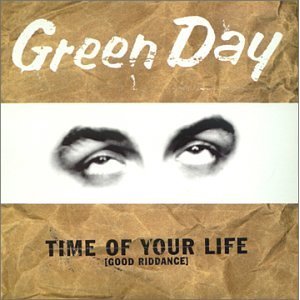
"Good Riddance (Time of Your Life)" (or "Time of Your Life (Good Riddance)") is a song by American rock band Green Day, released in December 1997 as the second single from their fifth studio album, Nimrod (1997). It is one of their most popular songs and has also become a staple of their concerts, usually played as the final song.

Kerplunk is the second studio album by the American rock band Green Day, released on December 17, 1991, by Lookout! Records. Following a US tour promoting their debut studio album 39/Smooth (1990), drummer John Kiffmeyer left to attend college and was replaced by Tré Cool, formerly of the Lookouts. By this stage, Green Day's audience expanded to teenage girls from suburban towns. In May 1991, they decamped to Art of Ears Studios in San Francisco, California, to record their next album with Andy Ernst, who co-produced the sessions with band. Six songs were recorded until the proceedings stopped in order for Green Day to resume touring, returning to the studio in September 1991 to finish the work.
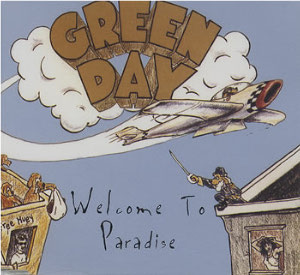
"Welcome to Paradise" is a song by the American rock band Green Day. It first appeared as the third track on the band's second studio album, Kerplunk (1991). It was re-recorded and rereleased as the fifth track on the band's third studio album, Dookie (1994), and released as the album's third single. Its physical release was exclusive to the United Kingdom on October 17, 1994, though the song still saw radio airplay in the United States. The song peaked at number 56 on the US Billboard Hot 100 Airplay chart. The Dookie version is more popular and was later included on the band's 2001 compilation album International Superhits!.
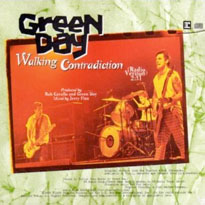
"Walking Contradiction" is a song by American rock band Green Day, released as a promotional single from their fourth album Insomniac. Also the closing track on the album, the song reached number 21 on the Modern Rock Tracks in August 1996. The riff of this song was used as the guitar solo for "Haushinka" on the demo version on their previous album Dookie.
Cigarettes and Valentines is an unreleased studio album by American rock band Green Day. The album would have been the follow-up to Warning (2000). In 2003, the album was nearly finished when the master tapes were mysteriously stolen from the band's studio. Instead of re-recording the album, the band decided to start from scratch, leading to the creation of American Idiot (2004). To date, only the title track has been released in full form, although American Idiot track "Homecoming" contains elements of the album. In an interview the band did on the New York radio station Q104.3 on March 28, 2010, Green Day confirmed "Too Much Too Soon" was a song recorded during the Cigarettes and Valentines sessions.

Frank Edwin Wright III, better known by his stage name Tré Cool, is an American musician, best known as the drummer for the rock band Green Day. He replaced the band's former drummer, John Kiffmeyer, in 1990. Cool has also played in the Lookouts, Samiam, Dead Mermaids, Bubu and the Brood and the Green Day side projects the Network and the Foxboro Hot Tubs.

¡Uno! is the ninth studio album by the American rock band Green Day, released on September 25, 2012, by Reprise Records. It is the first of three albums in the ¡Uno!, ¡Dos!, ¡Tré! trilogy, a series of studio albums released from September 2012 to December 2012. Green Day recorded the album from February to June 2012 at Jingletown Studios in Oakland, California. This is the band's first album recorded as a quartet, as touring guitarist Jason White joined the band in the studio to give the studio recordings a more live feel.
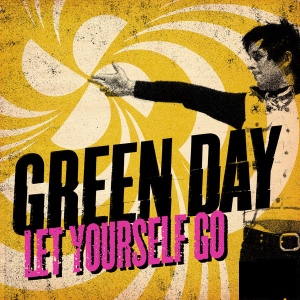
"Let Yourself Go" is a song by American rock band Green Day. The song is featured as the fourth track on their ninth studio album ¡Uno! (2012). Written by Billie Joe Armstrong and produced by Rob Cavallo, the song was released as the third and final single from the album on September 5, 2012. However, the "official live video" of the song was revealed on August 1, 2012. It is also the third single from the ¡Uno!, ¡Dos! & ¡Tré! trilogy.

Greatest Hits: God's Favorite Band is the second greatest hits album by American rock band Green Day, released on November 17, 2017.






















